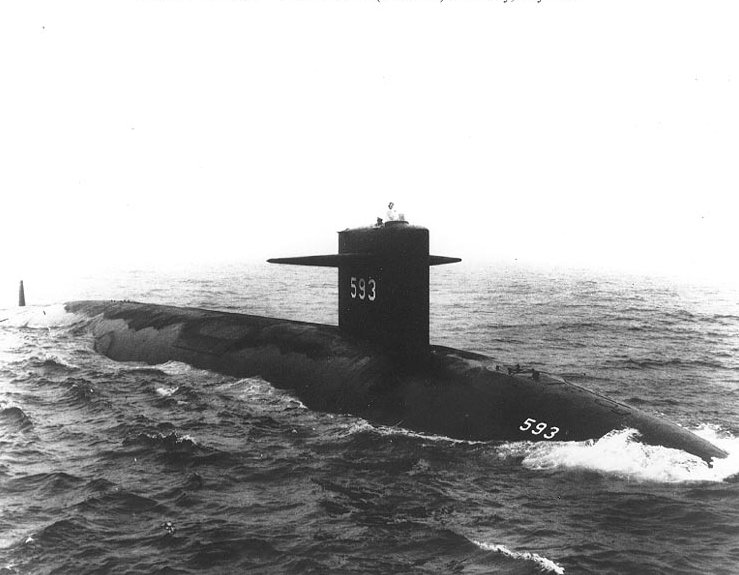One of the submarine vets aboard Skylark would state, “We heard sounds that are familiar to me,the sound of a ship breaking up—like a compartment collapsing…a muted, dull thud.”
The submarine Thresher looped lower into the deep Atlantic waters. There is little doubt that commanding officer Lieutenant Commander John Wesley Harvey had no inkling of the tragedy that was to come.
It was April 10, 1963, and USS Thresher (SSN-593) had just come out of a nine-month refit from the Portsmouth Navy Yard. Launched on July 9, 1960, she was the first in her class and state-of-the art in Cold War submarine technology.
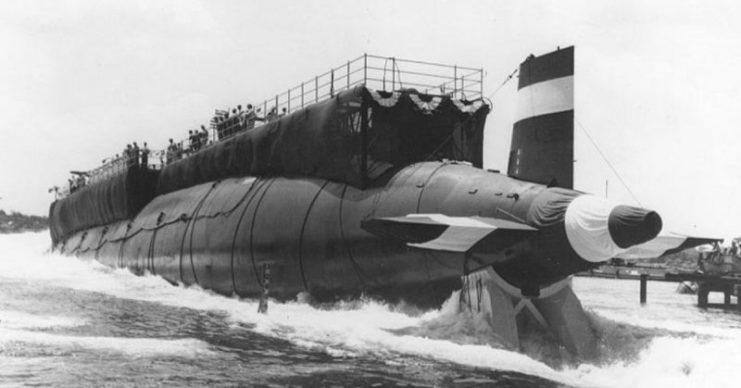
At 278.5 feet in length she was reinforced into a cigar shape weighing some 3,500 tons, built of strong HY-80 type steel that allowed her to withstand pressure of 80,000 pounds per square inch. She was built to go deep.
This and especially her nuclear power plant gave her the perfect traits necessary to act with the surprise and stealth that the American Navy demanded. Thresher’s job was to hunt and kill enemy submarines. She was to lurk silently in the deeps until she came to a shipping lane or some port, waiting for an enemy sub.
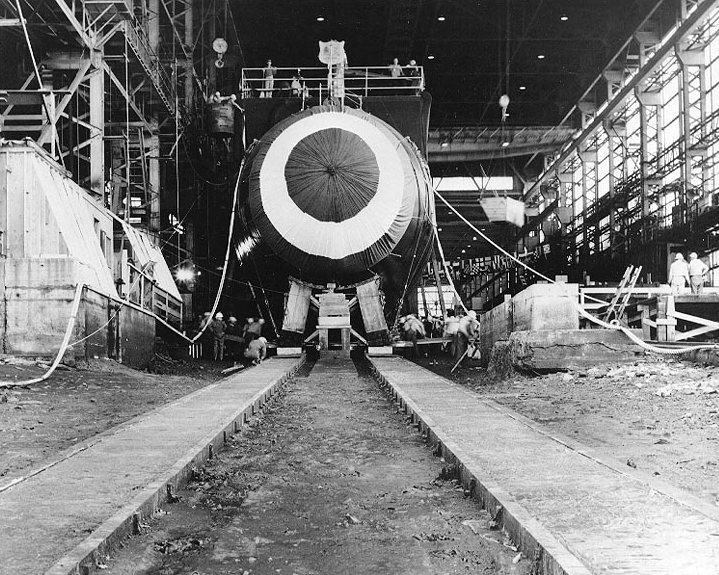
Then Thresher would strike, either through her four torpedo tubes which could carry conventional or nuclear weapons, or, as of the last refit, submarine rockets.
Now Thresher was to undergo deep water testing as part of the post-refit shakedowns. Lieutenant Commander Harvey set a course some 220 nautical miles east of Cape Cod to the waters off the continental shelf. This depth would allow Thresher to descend to her test depth of 1,300 feet, which is to say the maximum depth at which she was designed to operate and fight.
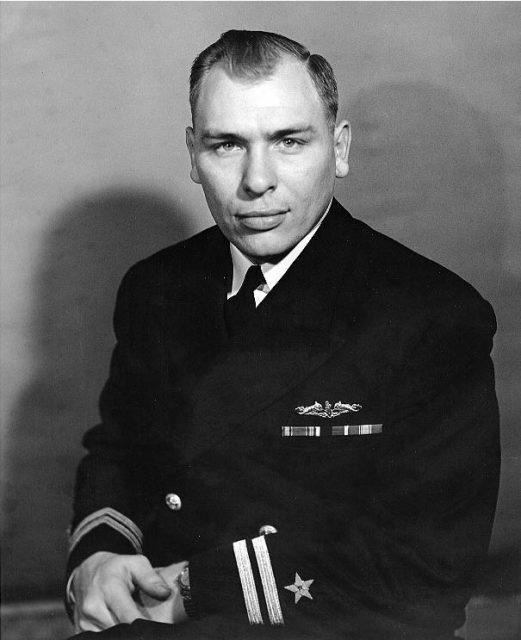
With Thresher was the Skylark, a submarine rescue ship which was to monitor and communicate with the submarine using the UQC, an underwater acoustic telephone that operated via soundwaves. Skylark could in no way effect a rescue if anything were to go wrong. The bottom was some 8,400 feet below. The rescue chamber aboard Skylark was designed to operate at only a theoretical 850 feet.
All had been tested. All was prepared. Lieutenant Commander Harvey was ready to dive. He informed Skylark that he was taking the submarine down to her test depth. It was 7:47 a.m.
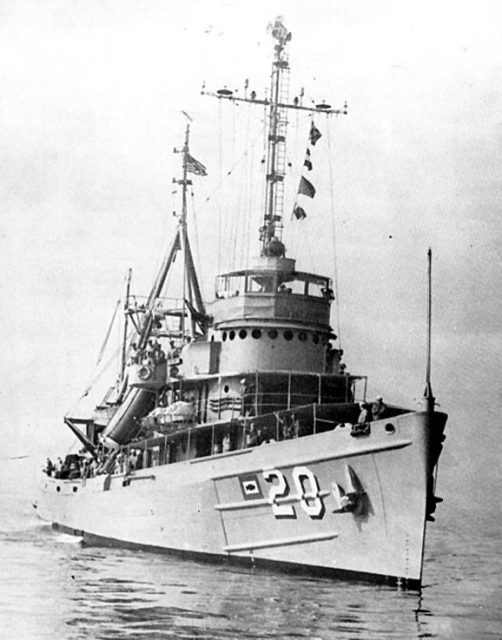
Thresher descended rapidly. Within five minutes, Harvey reported over the telephone that they were at 400 feet and checking for leaks. At 8:05 a.m. the submarine was at 650 feet.
Then at 8:35 a.m. they were at “minus 300 feet.” Harvey had switched to this more cryptic description of depth relative to the secret test depth just in case the Soviets were listening. Thus he was 1,000 feet deep, that is 300 feet above test depth – 1,300 feet. Telephone checks with Skylark were good. At 9:12 a.m. all seemed well in a routine communications check.
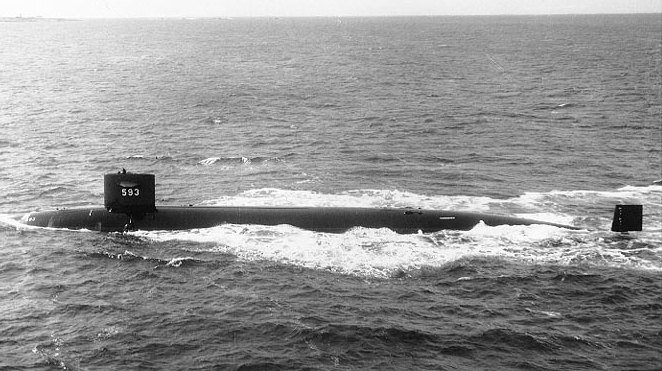
Then perhaps a minute later Thresher issued a new report. The crew of Skylark remembered it differently, but it was in essence the same: “Experiencing minor difficulty…Have positive up angle…Attempting to blow…Will keep you informed.”
The operators of Skylark’s UQC then heard the sound of whooshing – air under high pressure. Thresher, for whatever reason, was attempting to blow its ballast tanks and rise to the surface. The skipper of Skylark ordered the telephone operator to ask, “Are you in control?” When no answer came, the skipper took the microphone himself and repeated the question three times.
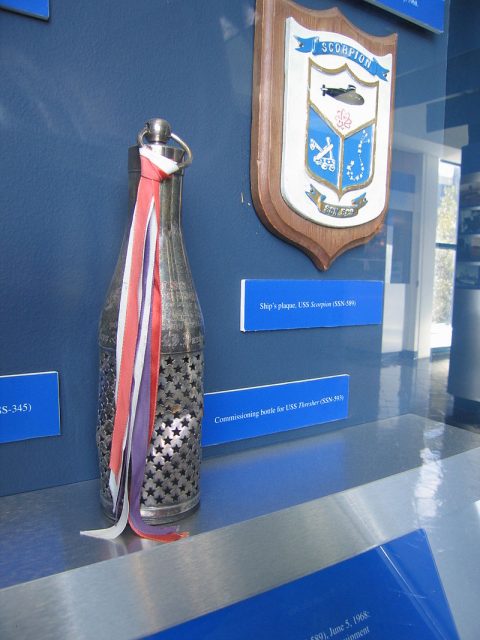
There was silence until 9:17 a.m. when a garbled message came from Thresher. The only words that could be made out were “test depth,” and one crewmember of Skylark said he thought he also heard “exceeding.” The ship picked up a transmission, transcribed as “900 N.”
This may have referred to the submarine’s depth (900 feet below test depth) and the “N” as a negative to the question which asked if they were in control. Whatever the meaning, this was followed by horrible sounds.
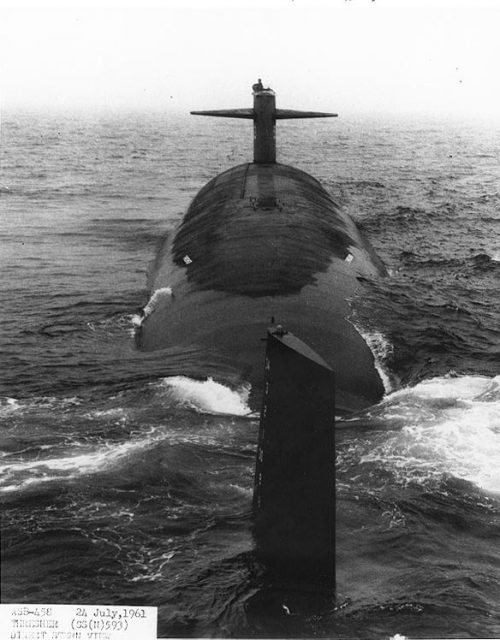
One of the submarine vets aboard Skylark would state, “We heard sounds that are familiar to me, from having seen ships blown up by torpedoes in World War II—the sound of a ship breaking up—like a compartment collapsing…a muted, dull thud.”
Skylark continued to wait – praying for contact with Thresher. Then at 10:58 a.m. Skylark started dropping signal grenades into the water. This was protocol that told the submarine to surface in the event of lost communications.
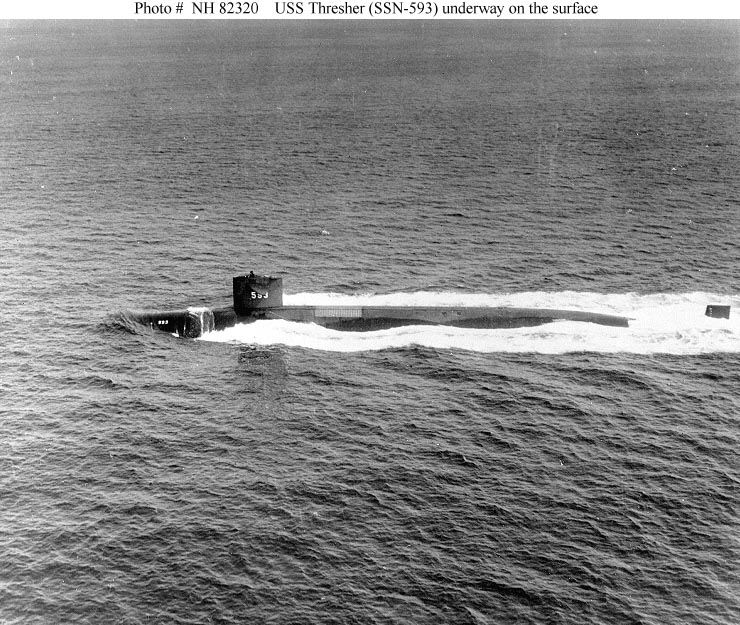
But Thresher and all 129 men aboard did not surface. At about 2,400 feet, the submarine imploded from sea pressure with the force of what one estimate calculated to be 22,000 pounds of TNT. The collapse occurred in one-twentieth of a second.
While the final death blow to Thresher would have been virtually instantaneous to the crew, it is hard to imagine that for at least the five minutes between the first report of trouble and the final transmissions that the crew was not aware of the boat’s death spiral.
After a fruitless search, President John F. Kennedy ordered flags at half staff across the country. The tragedy was international news. Songs were crafted by musicians such as Pete Seeger to memorialize the disaster. Monuments were erected across the country with the latest to be erected in Arlington National Cemetery, having received approval in 2019.
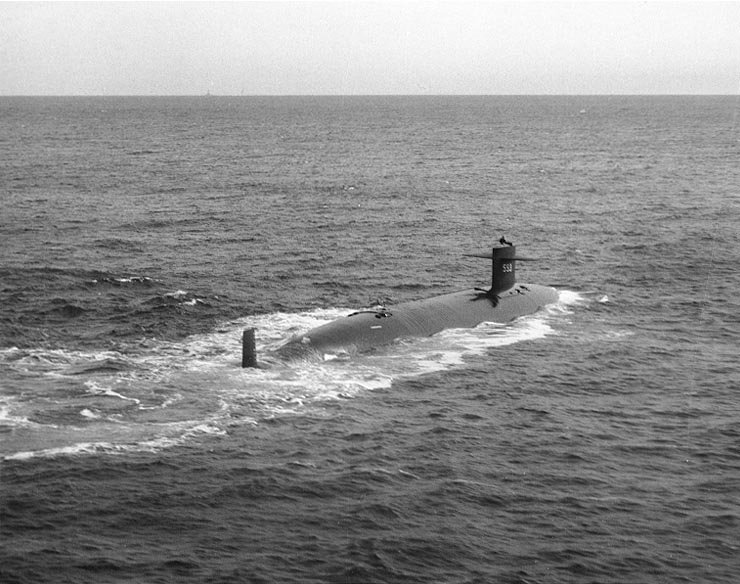
Thus the loss of Thresher became the deadliest submarine disaster in history. But its story does not end there. Immediately after the loss, a search for the submarine was conducted. After a tedious search a debris field of wreckage, likely from Thresher, was located using underwater cameras. It included piping, an air bottle, and a large spoon.
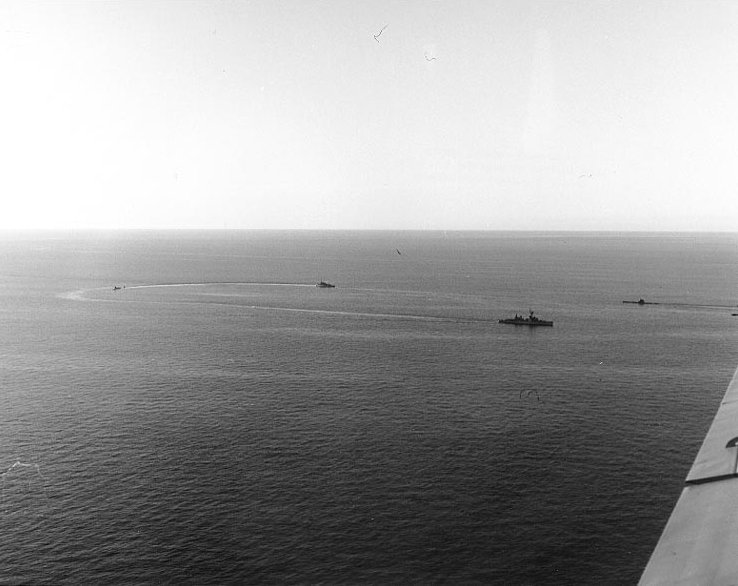
In order to make a closer examination, the Navy used the bathyscaphe Trieste. This submersible was designed for deep water diving and had made the first descent ever to the deepest part of the Marianas Trench, the Challenger Deep, at nearly 36,000 feet. It found Thresher’s scattered remains at approximately 8,400 feet.
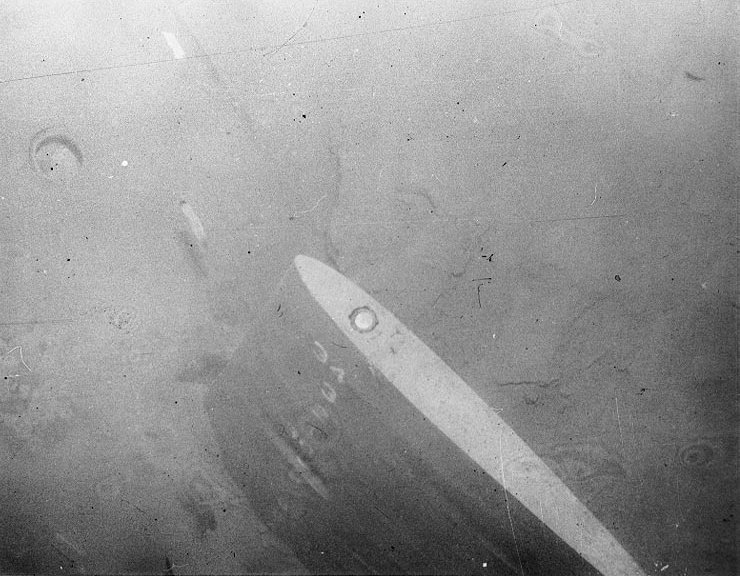
An autopsy of sorts was performed by the Navy as well as a lengthy inquiry. It reached the conclusion that the probable cause of the disaster was massive flooding in the engine room, blaming the silver-braised joints of the piping system. The water then impacted the boat’s electrical systems which shut down the nuclear reactor in what was called a “scram.”
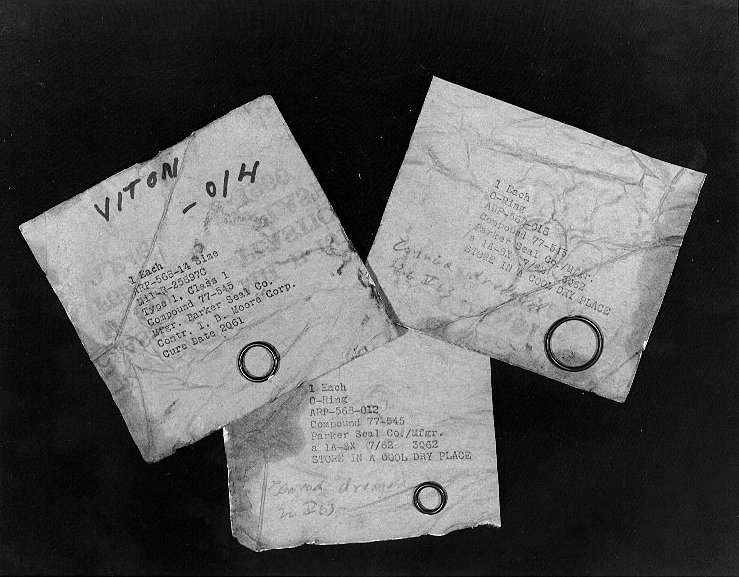
With a loss of propulsion, Thresher attempted to blow to the surface, but investigative testing showed that ice built up on a strainer in a valve at that depth, thus blocking the flow of air. Therefore, without the ability to surface and propulsion lost, Thresher sank until she reached a depth where the pressure crushed the submarine to death.
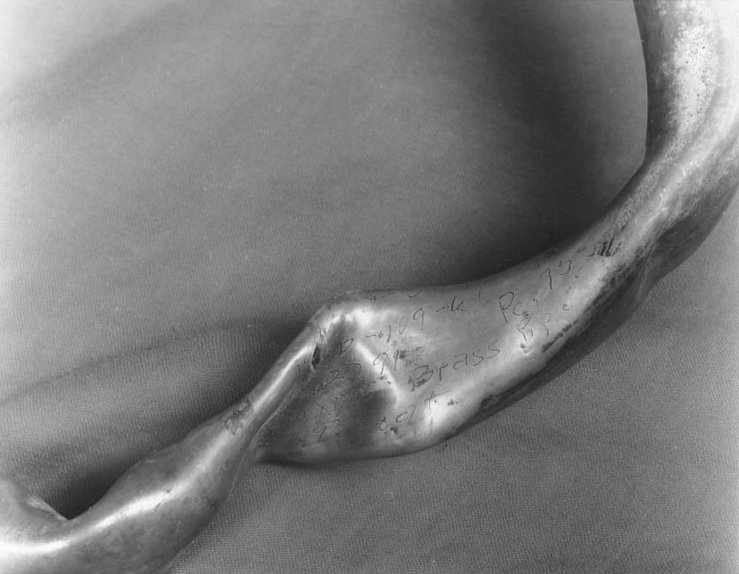
Still, even at the time of the inquiry it was admitted that the exact cause of the Thresher disaster may never be known. Recent analysis of the cause, based on the release of classified materials, has led to another theory.
The most compelling piece of evidence is that the Navy’s seafloor sound surveillance system (SOSUS), which was so highly classified that it was not openly discussed at the inquiry, detected a failure of an electrical bus which caused the coolant pumps to Thresher’s reactor to stop working.
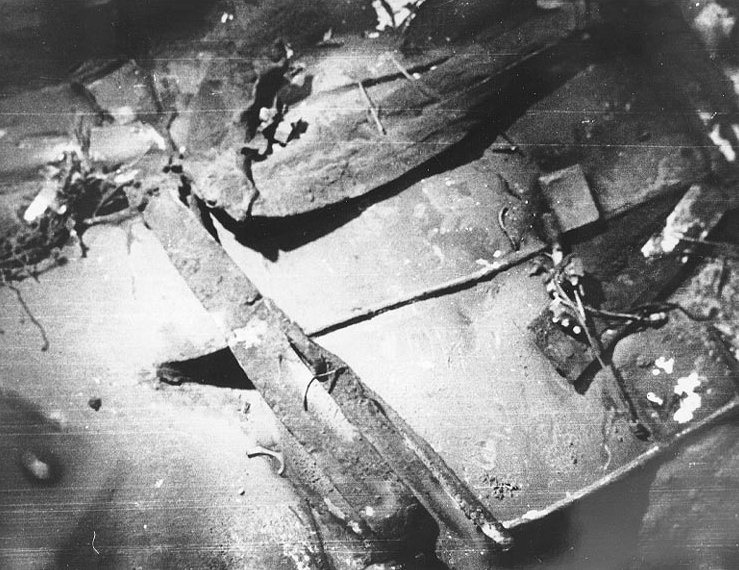
This resulted in a scram and thus the boat lost propulsion. When Thresher tried to blow its ballast tanks could not due to the iced up valves.
Why did the Court of Inquiry offer a different opinion? Some sources contend that Admiral Hyman G. Rickover, the head of the Navy’s nuclear propulsion wing, had a hand since it would be better for his program to blame faulty piping rather than the nuclear plant. Not all testimony for witnesses from the Court of Inquiry has been released, and there have been calls, even within the last year, to release the remaining testimony.
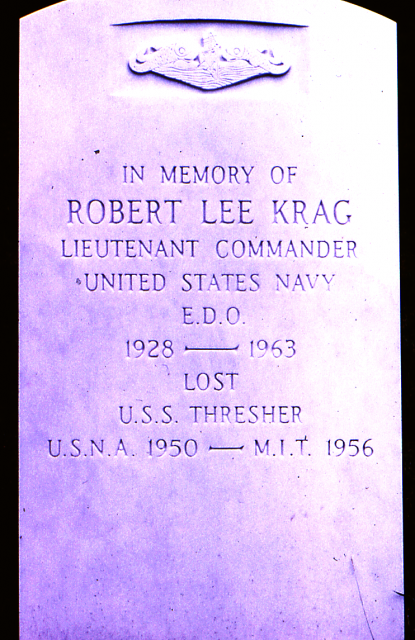
Read another story from us: Silent Service Game Changers – The Advent of Nuclear-Powered Submarines
The Thresher incident, like most undersea tragedies, resulted with improvements to safety. The Navy in 1963 launched the Submarine Safety Program (SUBSAFE) which is an inspection program to assure the quality of the submarine.
If actual results are meaningful, there has been only one American submarine loss since SUBSAFE started, and that boat, the Scorpion which was lost in 1968, was not-SUBSAFE certified.
